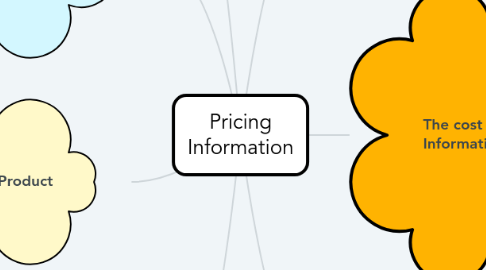
1. Costs and Competition
1.1. There are many suppliers offering similar products
1.1.1. each lacks the ability to influence prices
1.2. There are some cases of "information auctions".
1.2.1. digital content is sold to the highest bidders
1.2.1.1. Example: stocks and sairlines
2. The cost of Producing Information
2.1. Information is expensive to produce but inexpensive to reproduce
2.2. Once the first copy of the information good has been made, most costs are sunk and cannot be recocered
2.2.1. Sunk Costs: a cost that is not recoverable if production is halted.
2.3. Multiple copies can be made at roughly constant per-unit costs
2.4. There is no capacity set in stone for additional copy allowance.
3. Market Structures for Information Goods
3.1. The dominant firm model
3.1.1. based on virtue of the size and scale economy and has dominance over the smaller rivals
3.1.1.1. Example: Microsoft
3.2. Differentiated product market
3.2.1. number of firms producing the same kind of information but has a wide variety
3.2.1.1. Example: film and television
4. Characteristics that separate someone from their competitor
4.1. Differentiation
4.1.1. Don't let the information product become a commodity
4.1.2. Make sure there are no close competitors
4.2. Cost Leadership
4.2.1. Sell a lot f\of the product
4.2.1.1. By selling more of the product you are able to sell the product at a lower price compared to competitors
5. Personalizing the Product
5.1. Know your customer
5.1.1. Registration and Billing
5.1.1.1. ZAG: zip code, age, gender
5.1.2. Observation
5.1.2.1. Looking at the customers on-line behavior
6. Group Pricing
6.1. Price Sensitivity: if members of different groups differ their price sensitivity then offer the different groups different prices
6.1.1. Example: Student and Senior Citizen discounts
6.2. Network Effect: if the value to an individual depends on how many other members of the group use the product, there will be value to standardizing on a single product.
6.2.1. Example: Microsoft
6.3. Lock-In: if an organization chooses to standardize on a particular product, it may be very expensive for it to make the switch owing to the costs of coordination and retraining
6.3.1. Example: Microsfot
6.4. Sharing: in some cases it is inconvenient for an individual use to manage, or organize all information goods that someone will want to consume.
6.4.1. Example: Public Libraries
7. The Use of Promotions
7.1. promotions should be used to estimate price sensitivity
7.1.1. Most commonly used with online platforms
